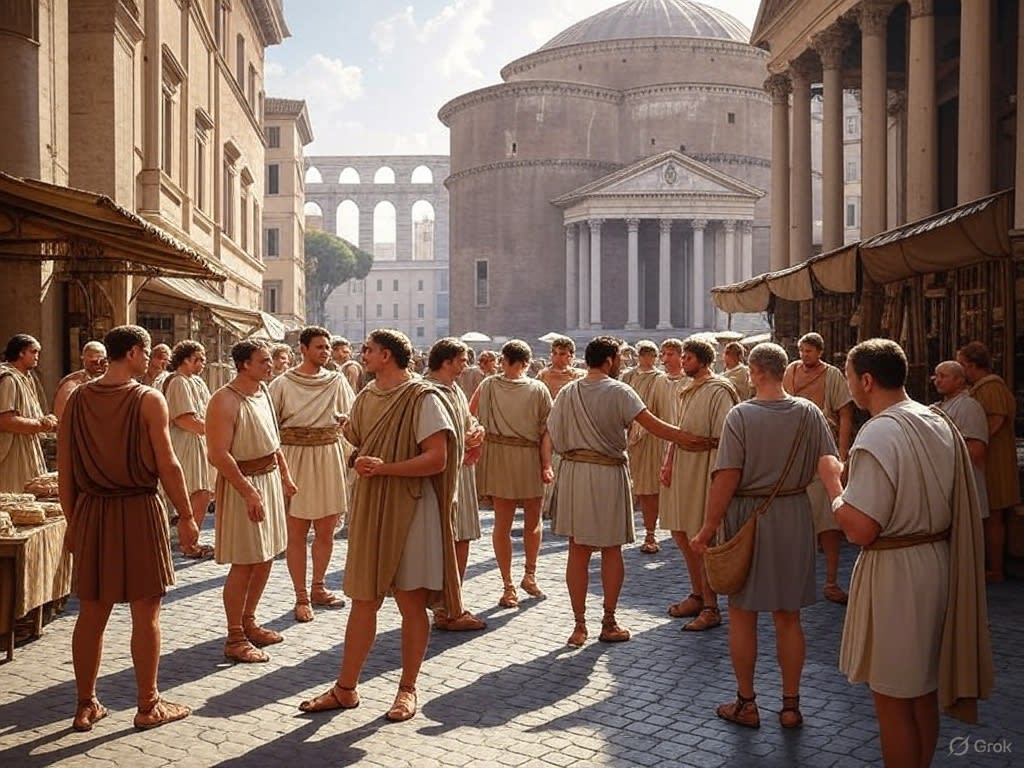MUST WATCH!!! Will NESARA/GESARA and the Angels Paradox Wipe Out Your Debt Overnight?
Throughout history, debt jubilees—widespread debt cancellations—have been enacted across civilizations to address economic crises, social inequalities, or political shifts. This concept resonates with modern discussions, including a notable proposal from the 1990s by Harvey Francis Barnard, a systems theory PhD and engineer. In his 1996 work, Draining the Swamp: Monetary and Fiscal Policy Reform, Barnard outlined NESARA, a bold set of economic reforms targeting systemic issues like debt and compound interest. His plan called for abolishing the Federal Reserve, eliminating income taxes, forgiving specific debts, and introducing new currencies. Though Barnard distributed his proposal to Congress, it was never introduced or enacted as legislation.
All Americans Will Lose Their Home, Income And Power By October 27, 2025
Contemporary discussions often touch on abolishing the Federal Reserve or reviving ideas like NESARA, but these proposals are unlikely to materialize in the near term. Politicians, such as Donald Trump, may leverage such concepts to rally support and inspire followers, yet follow-through remains absent. Notably, Trump has not revisited these topics recently. Instead, his Treasury Secretary of Treasury, Scott Bessent, emphasizes restoring trust in the Federal Reserve, signaling its enduring role. The Fed is deeply entrenched and, even if reforms were considered, it would likely retain a significant behind-the-scenes presence. The U.S. economy, heavily reliant on consumption and debt (financing chipotle), produces little domestically. Transitioning to a production-based economy would require substantial restructuring, likely taking at least five years to achieve meaningful progress.
Let’s revisit the concept of debt jubilees before diving deeper into NESARA. Debt jubilees were a hallmark of ancient societies, especially in the Near East, and are well-documented in religious texts and historical records. Although precise figures are scarce due to incomplete records, the following periods and civilizations stand out as key examples of where these practices occurred.

Mesopotamia (c. 2400–1400 BCE):
The most shocking videos in the world!
- Frequency: Debt amnesties, known as andurarum or misharum, were proclaimed by rulers like Hammurabi and others, often upon taking the throne or during crises. These occurred sporadically, perhaps dozens of times across centuries, tied to individual rulers’ reigns.
- Evidence: Assyrian and Babylonian records show rulers canceling personal debts, freeing debt-slaves, and returning land to original owners to stabilize economies and prevent rebellion.

Ancient Israel (c. 1000–500 BCE):
- Frequency: The biblical Jubilee, codified in Leviticus 25:8–12 and Deuteronomy 15:2–3, mandated debt cancellation every 50 years (after seven cycles of seven years). It’s unclear how consistently this was practiced, but textual evidence suggests it was an ideal, possibly enacted irregularly.
- Evidence: The Jubilee aimed to forgive debts among Israelites, return foreclosed land, and free indentured servants, reflecting a structural approach to debt relief.

Ancient Greece (6th Century BCE):
- Frequency: A notable example is Solon’s reforms in Athens (594 BCE), a one-time partial debt jubilee called seisachtheia (“shaking off burdens”).
- Evidence: Solon canceled personal debts, freed debt-slaves, and devalued the currency to ease debtor burdens, aiming to avert class conflict.

Ancient Rome (3rd Century BCE–3rd Century CE):
- Frequency: Debt cancellations were rare but occurred occasionally, often tied to political upheaval or emperor decrees. Specific instances are less documented but mentioned in context of populist reforms.
- Evidence: Roman rulers sometimes canceled debts to gain favor or stabilize the economy, though creditor resistance grew as oligarchs gained power.

Modern Examples (20th Century):
- Germany (1948): The Allied Powers’ currency reform replaced the Reichsmark with the Deutsche Mark, wiping out 90% of public and private debt.
- Frequency: Modern jubilees are rare, with Germany’s post-WWII case being a standout. Other partial debt relief efforts, like the Jubilee 2000 campaign ($130 billion in developing country debt canceled from 2000–2015), resemble jubilees but are narrower in scope.
Let’s explore the effects of debt jubilees and their impact. Do they provide meaningful relief, and who benefits the most from these measures?
On People’s Assets
- Positive: Debt jubilees often restored assets to debtors. In Mesopotamia and Israel, land foreclosed due to debt was returned to original owners, and debt-slaves were freed, preserving family wealth and social stability. Solon’s reforms in Athens similarly prevented land consolidation by elites, maintaining a broader base of landowning citizens.
- Negative: Creditors lost assets (loans or interest owed), which could reduce their wealth or influence. However, since many creditors were elites or rulers themselves, they often absorbed losses to maintain political power.
- Modern Example (Germany 1948):
- Positive: Wiping out 90% of debt freed households and businesses from financial burdens, enabling investment and consumption. Industry benefited from a debt-free start, contributing to the “economic miracle.”
- Negative: Creditors, especially those tied to the Nazi regime, lost significant wealth, but this was politically justified as their assets were devalued to prevent their dominance in the new democracy.
General Trend: Jubilees redistributed wealth from creditors to debtors, often preserving or restoring debtor assets (land, freedom, or financial capacity) while reducing creditor claims. This mitigated inequality but could disrupt lending if not managed carefully.

On Currency
- Mesopotamia: Currency (often silver or barley-based) was less affected, as jubilees focused on personal debts rather than monetary systems. However, some rulers devalued coinage or adjusted weights to ease debt burdens, which could erode trust in currency.
- Greece (Solon): Solon devalued the drachma alongside debt cancellation, reducing the real value of debts but also causing short-term price instability. This made exports cheaper but risked inflation.
- Rome: Currency debasement (e.g., during the 3rd century CE crisis) sometimes accompanied debt relief, leading to hyperinflation and trade disruptions, as seen with Diocletian’s failed price controls.
- Modern Example (Germany 1948):
- The Reichsmark’s replacement with the Deutsche Mark reset the currency, wiping out savings and debts tied to the old currency. The new currency stabilized quickly due to Allied oversight and economic reforms, avoiding hyperinflation.
- Jubilee 2000: Debt cancellation for developing countries had minimal direct impact on global currencies but increased fiscal space for debtor nations, sometimes weakening local currencies due to structural issues.
General Trend: Currency effects depended on implementation. Direct debt cancellation often had limited currency impact, but accompanying measures like devaluation or money creation could lead to inflation or loss of confidence. Modern jubilees, backed by strong institutions, are less likely to destabilize currencies.
On Way of Life
- Positive: Jubilees prevented debt bondage and land consolidation, preserving agrarian societies’ social fabric. In Israel, the Jubilee ideal reinforced community cohesion and religious values. Solon’s reforms in Athens reduced class tensions, strengthening democratic foundations.
- Negative: Creditors, often elites, resisted jubilees, and repeated cancellations could discourage lending, slowing economic activity. In Rome, failure to sustain jubilees led to oligarchic dominance and peasant displacement.
- Modern Example (Germany 1948):
- Positive: Debt cancellation enabled rapid economic recovery, improving living standards and fostering optimism. The “economic miracle” saw rising wages, employment, and industrial growth, transforming West Germany into a prosperous democracy.
- Negative: Some groups, particularly former creditors or savers, faced financial ruin, though this was mitigated by targeting Nazi-affiliated wealth.
- Jubilee 2000: Debt relief freed resources for healthcare and education in poor countries, improving quality of life (e.g., reduced child mortality). However, mismanagement in some nations limited benefits, and reliance on foreign aid persisted.
General Trend: Jubilees often improved debtors’ quality of life by reducing financial stress and restoring economic agency. They stabilized societies by curbing inequality and unrest but risked creditor backlash or economic distortions if poorly executed.
Broader Implications and Challenges
- Economic Growth: Jubilees often spurred growth by freeing resources for consumption and investment. Germany’s 1948 reform and ancient land restorations show this. However, critics argue jubilees can encourage reckless borrowing by signaling future forgiveness, though evidence (e.g., Solon’s reforms) suggests well-designed jubilees deter speculative debt.
- Inequality: Jubilees reduced wealth gaps by redistributing resources from creditors to debtors. Ancient rulers used them to prevent elite dominance, and modern examples like Jubilee 2000 aimed to alleviate global poverty.
- Risks: Canceling debts erases creditors’ assets, potentially destabilizing financial systems. In modern economies, banks could face insolvency (e.g., Canada’s RBC could be wiped out by a retail loan jubilee). Inflation or currency devaluation, as seen in Rome, is another risk if jubilees involve money printing.
- Cultural Shifts: Jubilees often reinforced communal values, as in biblical teachings or Mesopotamian social contracts. In modern contexts, they can spark debates about fairness, responsibility, and the role of debt in capitalism.
Debt jubilees, documented from ancient Mesopotamia to rare modern instances like Germany’s 1948 reform, have historically aimed to restore debtor assets—land, freedom, or financial capacity. These measures often reduced inequality and economic burdens, fostering societal well-being. When managed effectively, they stabilized currencies; mismanaged, they risked inflation. However, jubilees also posed challenges, including creditor losses and potential financial instability, necessitating careful design to balance relief with systemic stability. Ancient societies used jubilees to preserve social order, while modern applications often target economic recovery or poverty alleviation.
A debt jubilee could theoretically benefit the middle class by easing financial pressures, but powerful creditors—often major financial institutions—wield significant influence over political decision-making, making such reforms unlikely. This dynamic is evident in current events, where political access appears increasingly tied to wealth. For instance, recent reports highlight a new initiative, “The Executive Branch,” allegedly offering private dinners with the president for a $500,000 fee—an arrangement that has drawn limited scrutiny compared to similar actions by past administrations. This underscores a broader issue: political and economic systems are heavily shaped by those who fund them, namely bankers and financial elites. As a result, despite the potential benefits of a debt jubilee, the entrenched power of creditors makes its implementation in the current era highly improbable.
The National Economic Security and Recovery Act (NESARA) is a proposed set of economic reforms in the United States that has captured attention, largely within conspiracy theory circles and speculative online communities. Though often shrouded in esoteric narratives, NESARA’s origins and implications deserve a clear-eyed examination. The concept stems from a 1990s proposal by Harvey Francis Barnard, an engineer and consultant, who envisioned bold solutions to economic woes. His plan called for abolishing income tax, forgiving specific debts, reverting to a gold-backed currency, and overhauling the Federal Reserve. Yet, despite its ambitious scope, no evidence suggests that NESARA was ever formally introduced in Congress or gained legislative traction.
In the early 2000s, the National Economic Security and Recovery Act (NESARA) became the centerpiece of a viral conspiracy theory, largely propelled by figures like Shaini Goodwin, known as the “Dove of Oneness.” Advocates claimed that President Bill Clinton secretly signed NESARA into law in 2000, only for it to be suppressed by powerful elites. The theory captivated followers with bold promises of global debt forgiveness, sweeping wealth redistribution, and the creation of a utopian economic system. Over time, NESARA has intertwined with other conspiracy narratives, including QAnon, and spawned the concept of “GESARA” (Global Economic Security and Reformation Act), an alleged international equivalent. Despite their fervent appeal, these claims often lack credible evidence, relying instead on speculative or unverifiable assertions. NESARA’s enduring allure stems from its vision of a radical economic reset, resonating deeply with those frustrated by systemic inequalities and financial instability. Yet, its absence of empirical support has made it a target of skepticism among economists, historians, and critical observers.
Let us Discuss current issues long forgotten about such as Angell’s paradox and Sunspot Theory. Angells paradox suggests those who implement economic warfare do more harm to themselves by limiting resources and competition. Also, economic interdependence between nations makes war irrational and unprofitable, yet nations continue to engage in conflict despite this reality. In the book The Great Illusion, Angell posited that modern economies, particularly in early 20th-century Europe, were so interconnected through trade and finance that war would be economically disastrous for both victors and losers—disrupting markets, trade routes, and financial systems. For example, Germany and Britain, major trading partners before World War I, would both suffer immense economic losses in a conflict. Despite this logic, nations still pursued war, as seen with the outbreak of World War I. The paradox lies in the disconnect between economic rationality (war is unprofitable) and political/military behavior (nations still choose war), driven by factors like nationalism, mistrust, and the pursuit of power, which override economic self-interest
Now let us discuss sunspot theory which essentially is taking the wood panels from your house and throwing them into the fireplace to create warmth. This strategy may work in the short term and provide comfort until you are out of wood. Much like the United States debt market today we are out of wood and the comfort is fading away. To fully explain, sunspot theory explains how extrinsic, random variables—called “sunspots”—can influence economic outcomes by affecting agents’ expectations and coordination, even if these variables are unrelated to economic fundamentals. This theory highlights the role of psychology and expectations in driving economic fluctuations, showing how non-fundamental shocks can lead to real economic effects, such as business cycles or financial crises, in models with incomplete markets or imperfect competition.
Thank you for your continued support! We’re hope you’re enjoying our content on both our YouTube channel and Substack.
We’d love for you to join us at the NATURAL RESOURCE STOCKS EXPO 2025 in Atlanta from May 14-16! This is a fantastic opportunity for accredited investors or anyone passionate about learning more about mining to connect with us in person.
Anyone can join.
Anyone can contribute.
Anyone can become informed about their world.
"United We Stand" Click Here To Create Your Personal Citizen Journalist Account Today, Be Sure To Invite Your Friends.
Before It’s News® is a community of individuals who report on what’s going on around them, from all around the world. Anyone can join. Anyone can contribute. Anyone can become informed about their world. "United We Stand" Click Here To Create Your Personal Citizen Journalist Account Today, Be Sure To Invite Your Friends.
LION'S MANE PRODUCT
Try Our Lion’s Mane WHOLE MIND Nootropic Blend 60 Capsules
Mushrooms are having a moment. One fabulous fungus in particular, lion’s mane, may help improve memory, depression and anxiety symptoms. They are also an excellent source of nutrients that show promise as a therapy for dementia, and other neurodegenerative diseases. If you’re living with anxiety or depression, you may be curious about all the therapy options out there — including the natural ones.Our Lion’s Mane WHOLE MIND Nootropic Blend has been formulated to utilize the potency of Lion’s mane but also include the benefits of four other Highly Beneficial Mushrooms. Synergistically, they work together to Build your health through improving cognitive function and immunity regardless of your age. Our Nootropic not only improves your Cognitive Function and Activates your Immune System, but it benefits growth of Essential Gut Flora, further enhancing your Vitality.
Our Formula includes: Lion’s Mane Mushrooms which Increase Brain Power through nerve growth, lessen anxiety, reduce depression, and improve concentration. Its an excellent adaptogen, promotes sleep and improves immunity. Shiitake Mushrooms which Fight cancer cells and infectious disease, boost the immune system, promotes brain function, and serves as a source of B vitamins. Maitake Mushrooms which regulate blood sugar levels of diabetics, reduce hypertension and boosts the immune system. Reishi Mushrooms which Fight inflammation, liver disease, fatigue, tumor growth and cancer. They Improve skin disorders and soothes digestive problems, stomach ulcers and leaky gut syndrome. Chaga Mushrooms which have anti-aging effects, boost immune function, improve stamina and athletic performance, even act as a natural aphrodisiac, fighting diabetes and improving liver function. Try Our Lion’s Mane WHOLE MIND Nootropic Blend 60 Capsules Today. Be 100% Satisfied or Receive a Full Money Back Guarantee. Order Yours Today by Following This Link.








